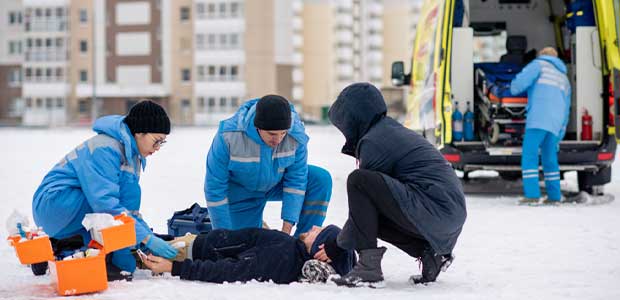
The Dangers of the Cold: Different Types of Cold-Related Illnesses
As workers are exposed to the cold, they can be at risk for cold-related illnesses.
- By Alex Saurman
- Jan 31, 2023
Although this past December was warmer than many other Decembers, winter is not over yet.
Many states across the country may still encounter cold temperatures throughout the next two months. Employers and employees exposed to cold conditions will need to take extra caution to protect themselves from cold-related illnesses. Here are just a few to know about and prepare for, according to OSHA and The National Institute for Occupational Safety and Health (NIOSH).
Chilblains
It’s possible that while in temperatures of 60 degrees Fahrenheit and under, a worker may get chilblains. A worker may experience itching, redness or, in some cases, blisters on some areas of their body, most commonly the “cheeks, ears, fingers and toes,” according to NIOSH. It’s important to not scratch the area, but in cases where this is difficult, utilize corticosteroid creams. Any blisters should be “clean[ed] and covered.”
Trench Foot/Immersion Foot
If a worker’s foot is wet and cold for a long period of time, they may be at risk for trench foot. Workers in temperatures as high as 60 degrees Fahrenheit can experience this illness, which is also called immersion foot. Keep an eye out for visual symptoms like blisters, discoloration of the skin, “bleeding under the skin” or swelling as well as a loss of feeling, cramps and “tinging pain,” NIOSH said. If a worker thinks they have trench foot, they should take everything off their feet and dry them. Extreme cases of trench foot may result in amputation, sepsis or death, according to the Cleveland Clinic.
Frostbite
If a worker can no longer feel parts of their body—or feels pain, “tinging or stinging”—and notices discoloration, they may be experiencing frostbite. To stop the illness from getting worse and causing severe damage, like the loss of a body part, the affected area needs to be warmed. Use warm water and body heat, NIOSH explained, and don’t use hot water, a “heating pad, heat lamp or the heat of a stove, fireplace or radiator.”
Hypothermia
A worker experiencing hypothermia—when the body’s temperature falls lower than 95 degrees Fahrenheit—may notice a variety of symptoms, ranging from shivering and fatigue early on to a lack of shivering, blue skin and decreased breathing later on, according to NIOSH. However, the drop in body temperature has a negative impact on the brain, meaning some people won’t be aware of their condition.
If you have or notice someone who has these symptoms, call for medical assistance. Once the person is in a warm area, any wet clothing should be taken off prior to dry clothes or other items, like blankets, being applied. To help warm the person up, give them warm drinks (only if they’re conscious, and no alcohol) and utilize options like skin-to-skin contact and electric blankets, NIOSH and OSHA said.
Looking to learn about heat-related illnesses? Check out OH&S’ article.
About the Author
Alex Saurman is a former Content Editor for Occupational Health & Safety,who has since joined OH&S’s client services team. She continues to work closely with OH&S’s editorial team and contributes to the magazine.